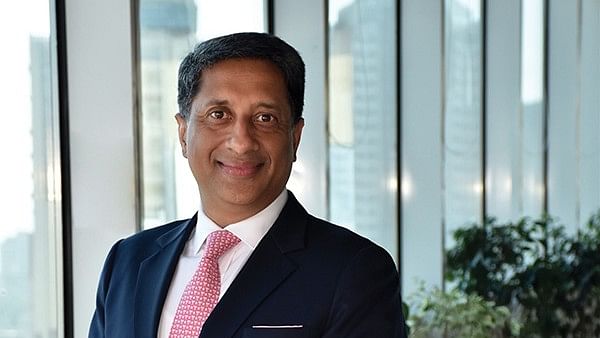
Vinay Malhotra
Credit: Special Arrangement
India's largest airline, Indigo, has been spreading its wings to touch more foreign shores lately. Its maiden flight to Jakarta in Indonesia on Monday, was quickly followed up with another to Tbilisi in Georgia on Tuesday and there are many more such launches on its roster. This, at a time when it already holds a 35.8% share of the international market serviced by Indian carriers, as per Directorate of Civil Aviation data. Pursuant to the inaugural flight to Jakarta, Vinay Malhotra, Head of Global Sales at IndiGo, sat down with DH's Lavpreet Kaur to discuss the airline’s perspective on the international market it is courting and more.
Edited excerpts.
What is driving your recent international expansion?
The two ingredients required for international travel apart from money are - passport and visa. Penetration of passports in India is about 7.3- 7.4%. There is immense untapped potential. Moreover, there are currently 57 countries that offer visa-free entry adding to the scope for growth.
We have seen a huge surge in international to international travel - people travelling from Dubai to Phuket, Bahrain to Phuket and more recently Tbilisi to Bangkok. So this is opening a totally unexplored territory or spectrum. Where earlier people would use other hubs in the world, today, it's so nice to see Indian airports turning into these hubs.
How has the Go First crisis benefitted you in terms of expansion and sales?
Theoretically, about 15% of our routes overlap with Go First's routes. And so there has been a marginal impact in terms of their passengers coming to us.
What percentage of your reported sales and profits came from international routes?
We are in the nascent stage of growth right now. It's too premature for me to talk about these numbers. But yes, overall, the results so far have been promising.
What aircraft type have you deployed on this route? Do you plan to change the aircraft type and boost frequency in the near future?
We are operating A320 Neos on this route. The number of flights between any two points is governed by a whole lot of points including availability of airport, aircraft, slots, bilateral and so on. So currently we've seven flights a week to Jakarta. As and when we progress and see routes developing whether more points in Indonesia or more points outside from here, we will see if we can replace the 180 seater aircraft with the one with 236 seats.
Do you plan any frequent flyer programme?
It is still work-in-progress.
What are your most robust route(s) in terms of ticket sales?
Last year we carried 86 million customers and this year we have a target of 100 million. People are travelling much more than they used to. Out of 1.4 billion 65% of the population is below the age of 35 and millennials are raring to go.
As far as robust routes are concerned, flights to Singapore, Thailand, Maldives, Malaysia, Sri Lanka and our new flights into Central Asia, Kenya, which we just started are doing well. The Middle East, which has an affinity with India, is a major market.
With a codeshare partnership with Turkish Airlines, the frequency to the UK is eight times a day. France is seven times a day. Switzerland is five times a day. We are very encouraged by the number of bookings we are seeing to all these parts of Europe, North Africa, US and not just within India.
What are your future plans for expansion in the international market?
There's a very large proportion of the population which resides within the 6-7 hours flying time from India. So India is placed in a very advantageous position geographically. In the 1000 aircraft which are expected over the next decade, we also are expecting several XLR (extra long range), which are capable of flying longer than where we fly today and that will give us an opportunity to fly to various parts of Central Europe, on the western side and multiple options in the Far East.